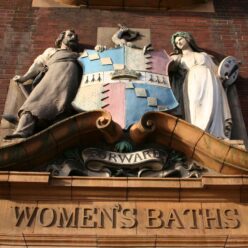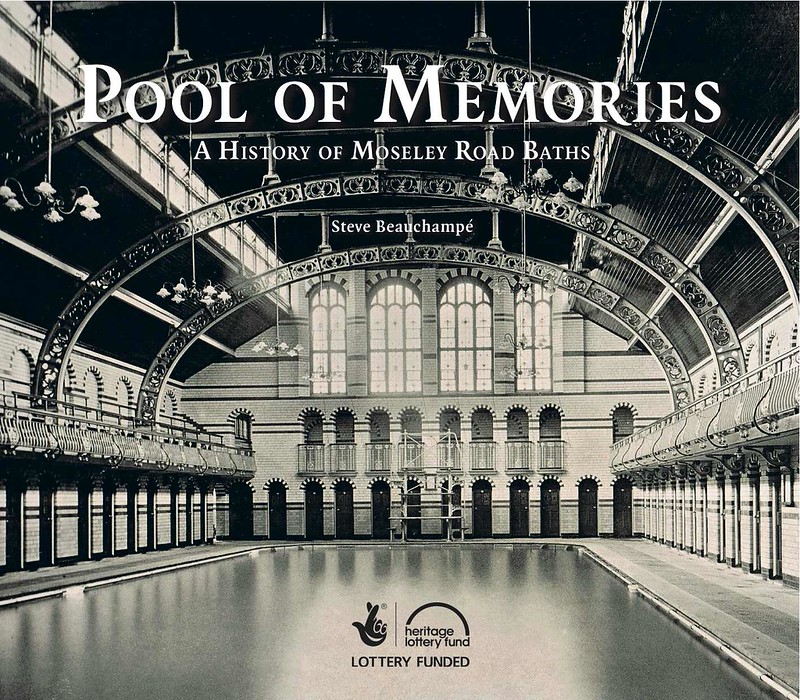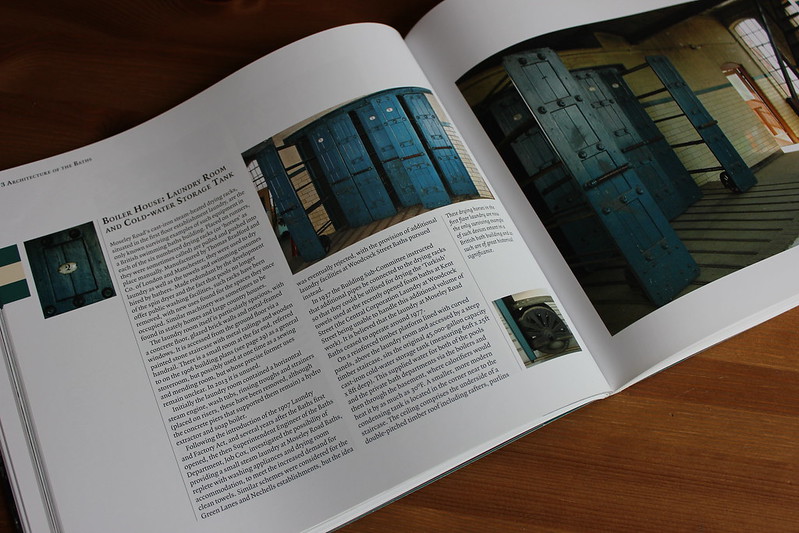We have received this wonderful account of a local lad learning to swim (I think in the 1960s?) from Graham Taylor whose Mum had got some pretty strong ideas on what was best for her kids. Make yourself a brew, put your feet up and have a read!
How I learnt to swim
I owe a lot to my mother. She was a loving mother and cared very deeply for me and my sisters; although she was a driven woman: she had firm ideas about things that she ought to do for her children. She felt she ought, for instance, to take us, in the years just after WWII, to the Welfare, where we got weighed and measured and issued with free Cod Liver oil and Orange juice (an orange coloured concoction that had nothing to do with oranges but was stiff with sugar, that also contained valuable quantities of various vitamins and minerals). You could, if you were not too discriminating, achieve something close to Corona’s Orangeade with a spoonful of Welfare orange, a spoonful of bicarbonate of soda and half a pint of water (and were willing to suffer occasional spasms of diarrhoea: very searching, was bicarb).
In the days when peace had returned but rationing still haunted us these were valuable supplements to keep children healthy and my mother was determined that we should not have less than our fair share. Mind you, she wouldn’t have accepted any arrangement where we had more than our fair share either; very egalitarian was my Mum.
And it wasn’t just in matters of supply and consumption; she had ideas about what we ought to learn and be able to do. One of her preoccupations was swimming. Perhaps she had been close to someone tragically drowned during her own youth that made her resolve that such a thing should never happen to her or hers – and took steps to guard against it. I do recall an incident where one summer Bank Holiday we went down to Bidford on Avon where there were public meadows along the riverside. We kids took off our socks and shoes and paddled in the water and Mum and Dad actually had swimming costumes and went into the Avon. All was going well until Mother, who could swim, but only just, went walking along the edge of a gravel shoal and stepped off the edge into deep water. Suddenly, she was in over her head and she panicked – well, who wouldn’t? Dad leapt off the bank and in seconds he was beside her, lifting her up and bringing her coughing and choking to shore. I didn’t really understand what had happened – I assumed that all grown-ups could walk on water if they chose, never mind whether they could keep themselves afloat. My father didn’t dramatize the incident but explained to me what had happened when I asked him and it faded into the background of my memory for years, no, for decades.
But when I got on into the middle classes, I’m guessing, of Grendon Road County Primary School, my mother explained to me one evening that on the following day she was going to take me to the swimming bath where I would be taught to swim. I must be sure to come straight home and not dawdle. I went to bed in a fever of anticipation, and dreamed half the night of a teacher in cap and gown, who stood beside a swimming pool, drawing diagrams on a blackboard and easel – and pointing imperiously with a long stick to select which pupil was chosen to demonstrate what he had just explained on the board. I had not understood at this stage that this was going to be a lengthy process and feared that I was going to have my work cut out to learn all there was to know about swimming in the course of one half-hour lesson.
When I got home the following afternoon we hurried up Sunderton Road to the bus stop at Betton Road where we boarded a blue and cream, No 50 Corporation bus and set off for town. You got on at the back of the bus in those days – and there was a conductor to take your fare. When we got to Moseley Road, it was all a bit more mundane than my imaginings – but impressive all the same. A huge building, decorated in Edwardian style, not that I knew that at the time, catered for a variety of needs: if you didn’t have a bathroom at home you could come down there once a week where a lady attendant would draw a big tub of hot water for you, in a private cubicle, so that you could perform your ablutions. There were soap and bath cubes available to buy from the attendant behind the little oak-framed hatch in case you hadn’t brought your own. Between the bathroom cubicles the partitions didn’t go all the way up to the high ceilings so even in privacy there was a sort of communal feel to it. I think there were also Turkish baths but I don’t know much about them – except the skimpy detail my mother was able to provide in response to my questions.
Those of us who had a bathroom at home, among whom I was happily numbered, didn’t need these facilities but proceeded through the back to the big pool where Mr Eggison held court. I know now that he was Bill Eggison but I really supposed that his own mother and wife addressed him as ‘Mister’ – he was, to me, that kind of a no-nonsense sort of man. I imagine now that he had learnt his skills in one or other of the Armed Forces as a PT instructor but in the mid-1950s I thought he had been imported from some other watery planet in order to teach humans how to survive in the water.
From day one we were in the water – to some degree the new beginners were expected to look around and see what other kids were doing – to get an idea of what to do next. Mr Eggison walked up and down the side of the pool, with his whistle on a ribbon round his neck, gesticulating, exhorting, explaining and doing his best to get us all to do what didn’t come naturally. There were sessions of hanging on the bar at the side of the pool in order to practise our leg kicking; if the energy expended could have moved the bath it would have ended up somewhere down by Bradford Street. This was followed by numerous widths back and forth across the pool pushing a cork float (polystyrene came later). No cheating allowed – you couldn’t keep a foot on the bottom. You had to stay afloat and propel yourself with your legs and feet alone.
Arm strokes were practised while walking to and fro across the pool in chest deep water but then, eventually, came the day when you were expected to integrate these activities, kick your legs, wave your arms around and – keep breathing. That was the hardest thing I ever had to do until I came to patting my head and rubbing my tummy at the same time. In fact, my early exposure to the integrated activity of swimming may have been material in helping me to pat my head and rub my tummy when, later in life, I wanted to become a helicopter pilot.
Still, with patience and persistence (on Mr Eggison’s part), the day finally came when I pushed off and swam breaststroke across the width of the pool. Once that barrier was breached it all got easier; soon I was moved up a class and was swimming lengths. I took two steps forward and one step back when it came to learning to swim the crawl and have never been as comfortable with that stroke as the first one I ever learned. I suspect my limbs were not supple enough.
Once we could swim we had to learn to dive – well, dive in off the side of the pool anyway. If you’ve never done it, you have no idea how much resolve it takes to trust your instructor and hurl yourself headfirst off the side of the pool. It was the headfirst bit that was difficult – we could all jump in feet first – but head first – ah, that was a fish of a different stripe.
Once a term we had a ‘fun’ day when instead of the usual drudgery of widths and lengths we were allowed to do things like diving for the black rubber-covered brick in the deep end of the pool. This was actually a training aid for the life-saving courses which followed on naturally from swimming. We also competed to see who could swim the longest distance underwater before coming up for air.
I did think, in retrospect, that it might have been explained to us from the beginning that if you got pool water in your mouth, you were allowed to spit it out. I had been brought up quite strictly to understand that ‘spitting’ was one of those things one didn’t do. There were even notices on the Corporation buses that said, if my memory serve me right, “Expectoration is forbidden”. I had to get my mother to explain to me what expectoration was. I assumed this prohibition was general and so if I got a mouthful of chlorinated water whilst swimming I used to swallow it. I suppose I imbibed several pints in the course of an average lesson and this could cause some embarrassment during the journey home as my bladder swelled to gargantuan proportions and strained to contain the water expropriated from the swimming bath.
Eventually my mother ceased to accompany me to Moseley and I was trusted to go up and down on the bus by myself – and that was part of the growing up process as well. These days, many would prefer to convey their children by car to their lessons and wouldn’t dream of entrusting them to public transport where predators and paedophiles lurk. I think that a modest amount of calculated risk is necessary in any proper bringing up.
As I passed out of Mr Eggison’s ambit and went on to the grammar school at KE Camp Hill I discovered that my mother had given me a flying start in life. That was a confidence-booster: there were lots of kids who couldn’t swim as well as I could, some who couldn’t swim at all and so when we went up to Institute Road in Kings Heath I could swim up and down to my heart’s content while Mr Thane, the gym teacher, struggled to train those who hadn’t had the Eggison treatment.
If you think that my mother did well by me, consider that I had two younger sisters who were also, in their turn, given the Eggison treatment. How many hours must my long-suffering mother have spent bussing up and down the Moseley Road and Alcester Road, and how many hours did she sit there at the poolside breathing in the chlorinated atmosphere while her kids were inoculated against drowning? She should have had a medal.
Mr Thane offered to train up the competent swimmers to take their Royal Life Saving Society medallion – and I went in for this. There was no mouth to mouth resuscitation in those days and we spent ages on the gym floor practising the Holger Neilsen method of ‘artificial respiration’, alternately pressing on someone’s shoulder blades and lifting them by their elbows in order to induce inspiration and expiration. I never used it in anger and do not know whether it would have worked if I had needed it but it did give me great confidence in the water, not only that I could save myself but also help someone else in distress if necessary. You were also taught that, if you approached someone in the water in order to rescue them and they grabbed hold of you, preventing you from swimming and threatening to drown you both, then it was permissible to be cruel in order to be kind – you were taught a method of breaking the stranglehold by ducking the other person under the water. This was a useful practical lesson, but I realised later, it was also a very formative lesson for life in general: there are times in life when danger threatens and one well-trained person who can be ruthless in doing what needs to be done can make a great difference to the outcome. The question is: are you going to be one of those shouting for help – or one of those offering to provide it? I won’t pretend I thought about it in those terms in my early teens but still it did colour my outlook on life in a general way. We learn more things at school than are taught in the classroom. Well, we do if it’s a good school and we are willing to learn.
Later in life I trained to be a sub-aqua diver and I dived on coral reefs in the Persian Gulf, in the Indian Ocean, in Hong Kong and even on the world’s second longest Barrier Reef in Belize, Central America. I dived in a harbour basin in Marchwood on Southampton Water in water so turbid that I couldn’t see a hand in front of my mask once I got more than five feet below the surface. I took good care not to swallow the water on that occasion, which was not a pleasant experience, but like a few more it taught me that with the right training and experience you can do things in time of need that you might not willingly venture into until you must – and when you are in a tight corner then being able to draw on good training and experience will carry you through a great deal of adversity.
And all of that began with Bill Eggison at Moseley Road and my indefatigable mother, God rest her. Money was not freely available in our household in my youth, discretionary spending must have been very limited but she was determined to find the means to have all her children taught to swim – and she succeeded.
Despite Moseley Road Bath’s undoubted popularity with swimmers of all ages, I learn that since I knew it the building has suffered from acute neglect over a sustained period of time to the extent that in 2007 it featured on the Victorian Society’s list of the ten most endangered buildings in Britain. Currently, only the smaller pool is operational, the Gala Pool and ‘slipper’ baths having closed for safety reasons in 2003 and 2004 respectively.
Its future is now very much in doubt with calls to transfer ownership from local authority control and convert the building, or at least large parts of it, to uses unconnected with swimming or fitness.
Opened in 1907, it is the oldest of only three Grade II Listed swimming baths currently operating in Britain. Remarkably for a building now into its second century, it survives almost intact, still used for its primary purpose and with very few alterations to the original layout. As such Moseley Road Baths contains many of its original features, fixtures and fittings and it would be a great shame if its original intended use were lost to the public.



